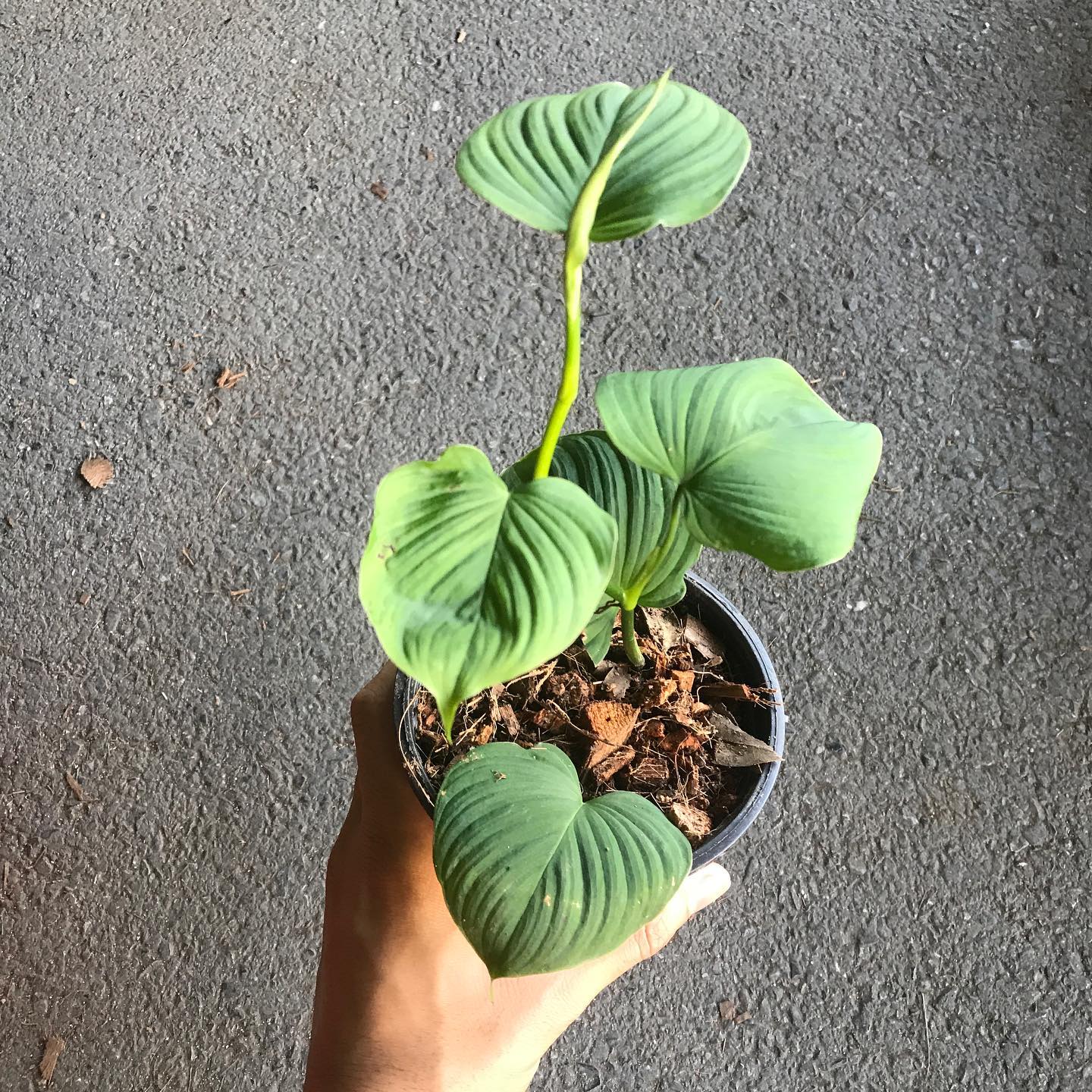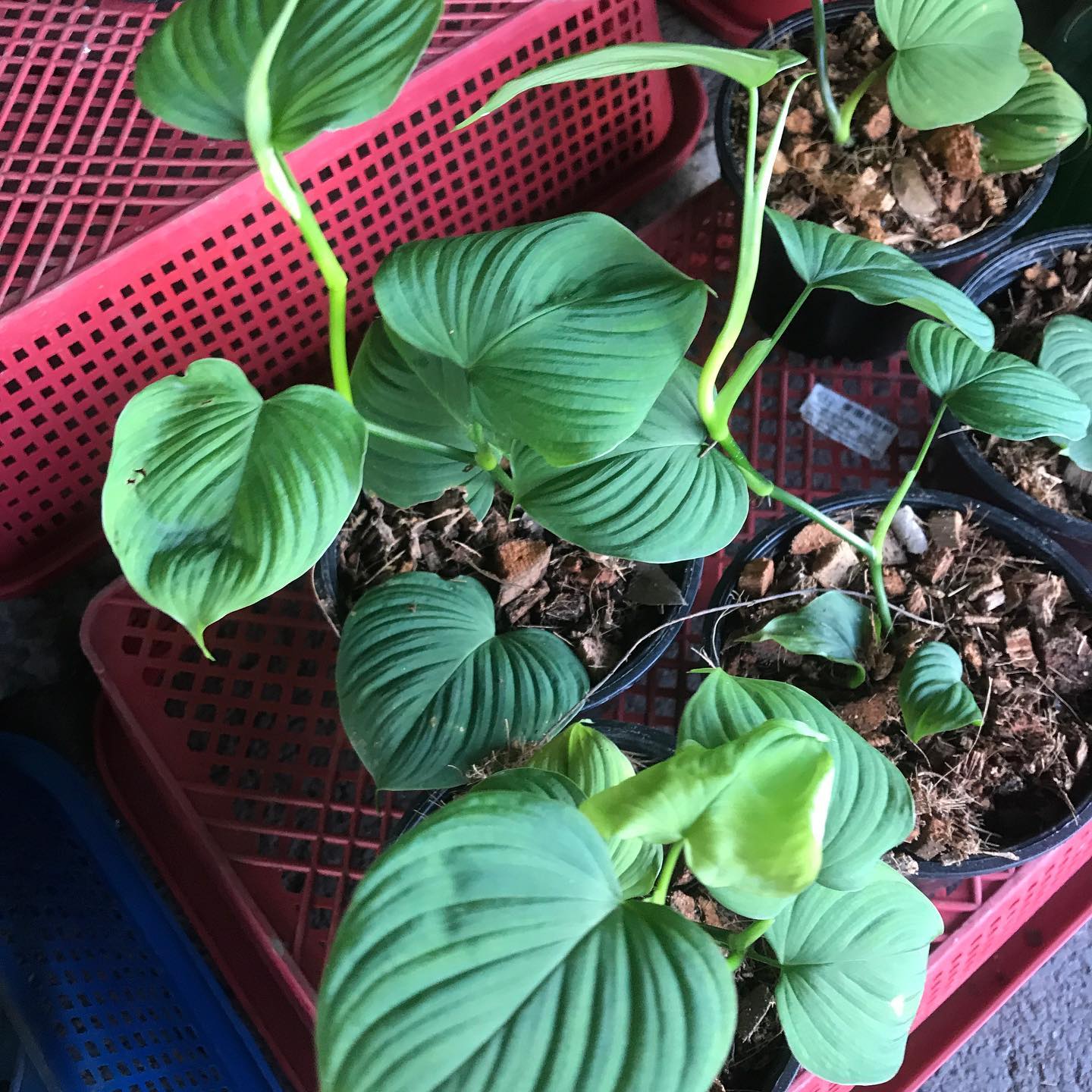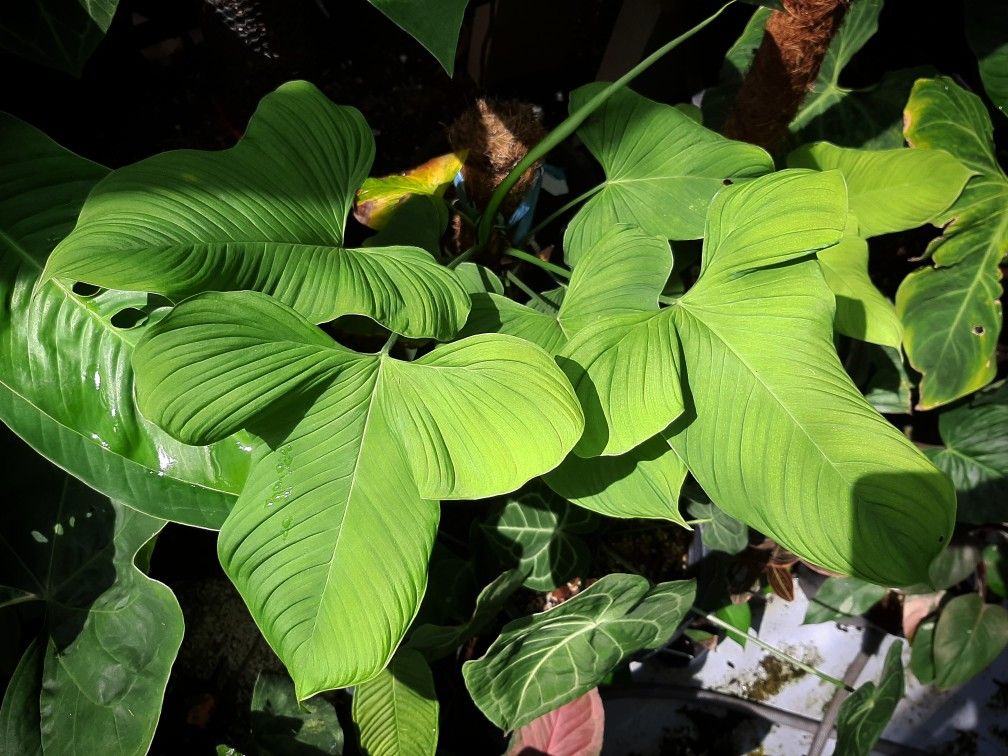Introduction
Philodendron fibraecataphyllum is an attractive and low-maintenance houseplant that is becoming increasingly popular among plant enthusiasts. This philodendron tropical species is native to the rainforests of South America, where it grows as an epiphyte (a plant that grows on another plant, but does not depend on it for nutrition).

Origin and Distribution of Philodendron Fibraecataphyllum
The philodendron fibraecataphyllum plant is a species of the Araceae family and is native to the tropical regions of South America, specifically the Amazon Basin. This species of philodendron is considered an epiphyte, meaning that it grows on other plants for support and does not draw its nutrients from the host plant.
Physical Characteristics of Philodendron Fibraecataphyllum
Philodendron fibraecataphyllum is a beautiful and distinctive plant with long, green leaves that are slightly curled at the edges. The leaves are thick and leathery, and they have a glossy appearance that adds to the plant’s overall appeal. The plant can grow up to 1 meter in height and spread, but it can also be trimmed to maintain a compact size, making it ideal for small spaces.

“Discover the rare and stunning Philodendron Fibraecataphyllum. Click here to bring this exotic beauty into your home today!”
How to Care for Philodendron Fibraecataphyllum
Philodendron fibraecataphyllum is a relatively easy-to-care-for plant, making it a great choice for plant enthusiasts of all skill levels. Here are some tips on how to care for this tropical beauty:
-
Light
Philodendron fibraecataphyllum prefers bright, indirect light, but it can also tolerate lower light levels. However, if the plant does not receive enough light, its leaves will become dull and its growth will slow.
-
Water
Philodendron fibraecataphyllum likes to be kept consistently moist, but not waterlogged. Watering the plant every one to two weeks, depending on the light and heat levels in your home, is usually sufficient. When you water, be sure to use room-temperature water and allow the excess to drain away.
-
Humidity
Philodendron fibraecataphyllum is native to the humid rainforests of South America, so it prefers higher levels of humidity. To increase humidity around your plant, you can place a tray of water near it or use a humidifier.
-
Soil
Philodendron fibraecataphyllum prefers well-draining, high-quality potting soil. A mixture of peat moss, perlite, and vermiculite will provide the necessary nutrients and allow for proper water drainage.
-
Fertilizer
Philodendron fibraecataphyllum benefits from occasional fertilization, especially during its growing season (spring to fall). Use a balanced, water-soluble fertilizer every two to four weeks to promote healthy growth.
Where to buy Philodendron fibraecataphyllum? Benefits from importing plants from Thailand
- Shipping: Door to door shipping, fast and safe with Dragon Courier
- Biodiversity: Thailand is known for its rich biodiversity, including a wide variety of aroid species. This diversity allows importers to access a broad range of unique and exotic aroid plants.
- Quality and Health of Plants: The suitable climate helps the plants grown here stay healthy and of high quality.
- Cost-Effectiveness: Due to favorable growing conditions and efficient production methods, Thai aroid plants can often be more cost-effective compared to those from other countries.
- Access to Hybrid Varieties: Thai growers are often involved in the development of new hybrid aroid varieties, offering unique plants that may not be available from other sources.
Philodendron species are the most sought after by aroid plant lovers
Propagating Philodendron Fibraecataphyllum
Philodendron fibraecataphyllum can be propagated through stem cuttings. Simply take a stem cutting that includes a few leaves and plant it in a pot of moist, well-draining soil. Keep the cutting in bright, indirect light and maintain consistent moisture levels. Within a few weeks, roots should start to grow, and your new plant will be on its way!

Pests and Diseases of Philodendron Fibraecataphyllum
Like all plants, philodendron fibraecataphyllum is susceptible to pests and diseases, but it is generally a hardy plant that is resistant to most problems. Some of the most common pests to watch out for include spider mites, mealybugs, and scale insects. If you notice any pests on your plant, you can use a gentle, organic insecticide to treat the problem. If you encounter these pests, you can find helpful solutions and preventive measures in our Philodendron care guide
Diseases that can affect philodendron fibraecataphyllum include root rot, which is caused by overwatering, and leaf spot, which is caused by fungal infections. To prevent these problems, be sure to provide your plant with proper care, including proper light, water, and soil conditions. If you notice any signs of disease, remove any affected leaves and treat the problem promptly to prevent it from spreading.
Conclusion
Philodendron fibraecataphyllum is a beautiful, low-maintenance houseplant that is perfect for plant enthusiasts of all skill levels. With its long, glossy leaves and attractive appearance, this plant is sure to add beauty and interest to any space. By following these simple care guidelines, you can help your philodendron fibraecataphyllum thrive and enjoy its beauty for years to come.
FAQs
- What type of light does philodendron fibraecataphyllum prefer?
Philodendron fibraecataphyllum prefers bright, indirect light, but it can also tolerate lower light levels.
- How often should I water philodendron fibraecataphyllum?
Philodendron fibraecataphyllum likes to be kept consistently moist, but not waterlogged. Watering the plant every one to two weeks, depending on the light and heat levels in your home, is usually sufficient.
- Does philodendron fibraecataphyllum require high levels of humidity?
Yes, philodendron fibraecataphyllum is native to the humid rainforests of South America, so it prefers higher levels of humidity.
- What type of soil is best for philodendron fibraecataphyllum?
Philodendron fibraecataphyllum prefers well-draining, high-quality potting soil. A mixture of peat moss, perlite, and vermiculite will provide the necessary nutrients and allow for proper water drainage.
- How can I propagate philodendron fibraecataphyllum?
Philodendron fibraecataphyllum can be propagated through stem cuttings. Simply take a stem cutting that includes a few leaves and plant it in a pot of moist, well-draining soil. Keep the cutting in bright, indirect light and maintain consistent moisture levels. Within a few weeks, roots should start to grow, and your new plant will be on its way!





















